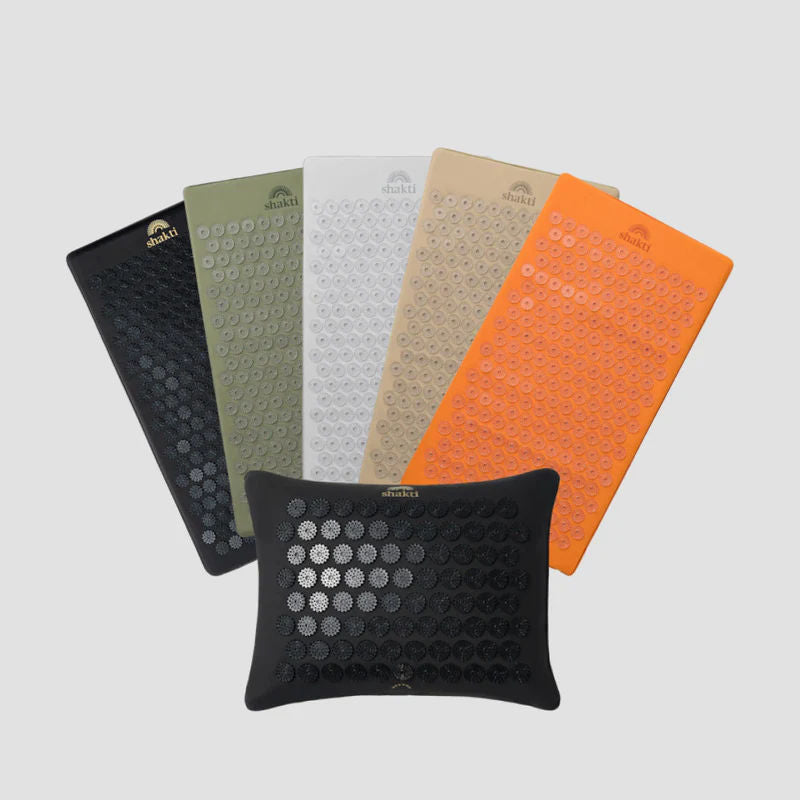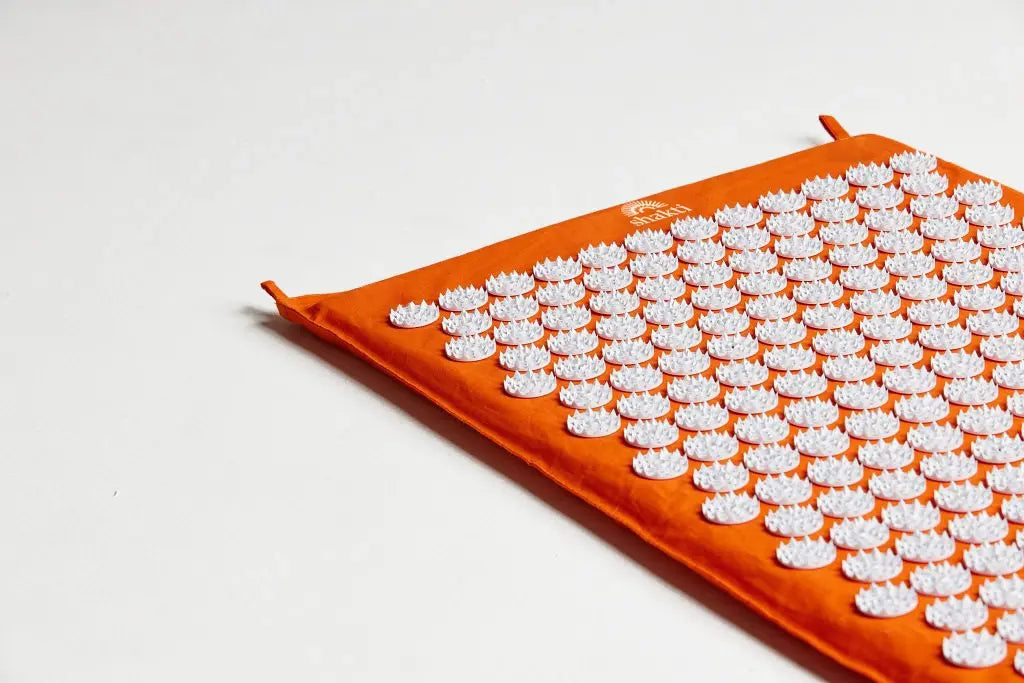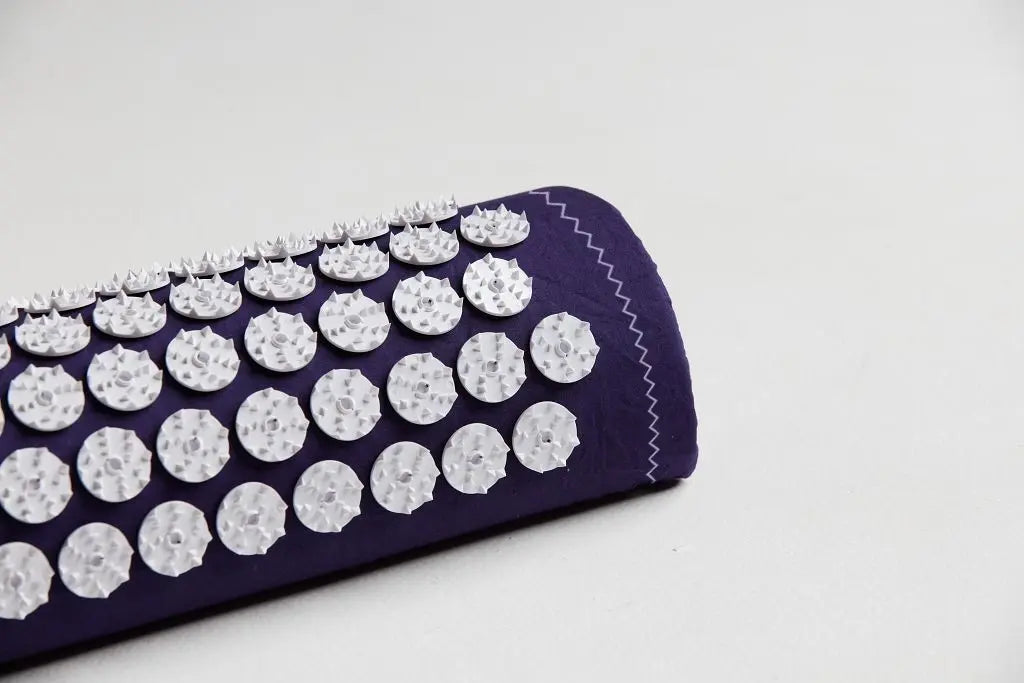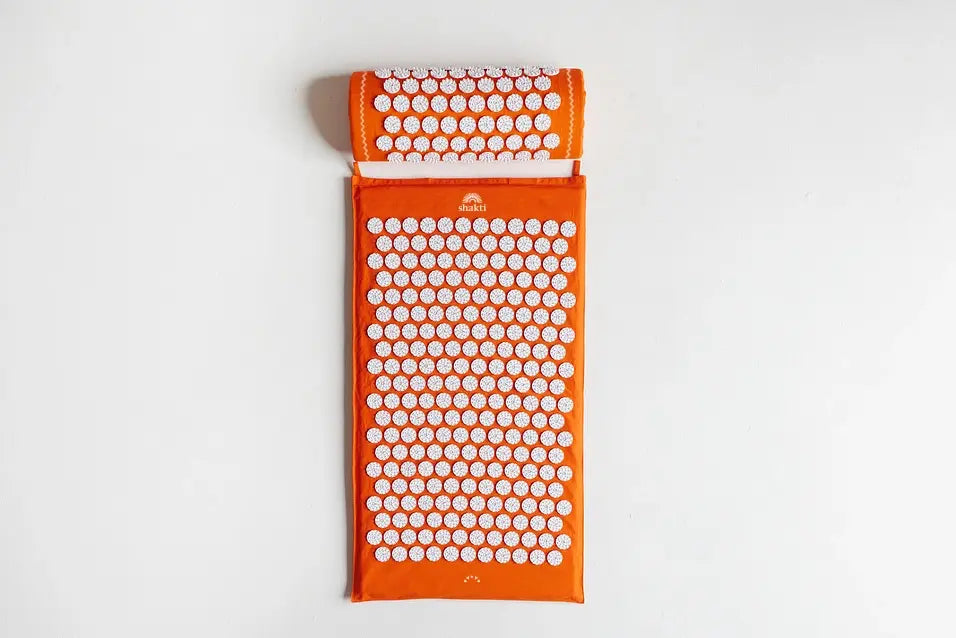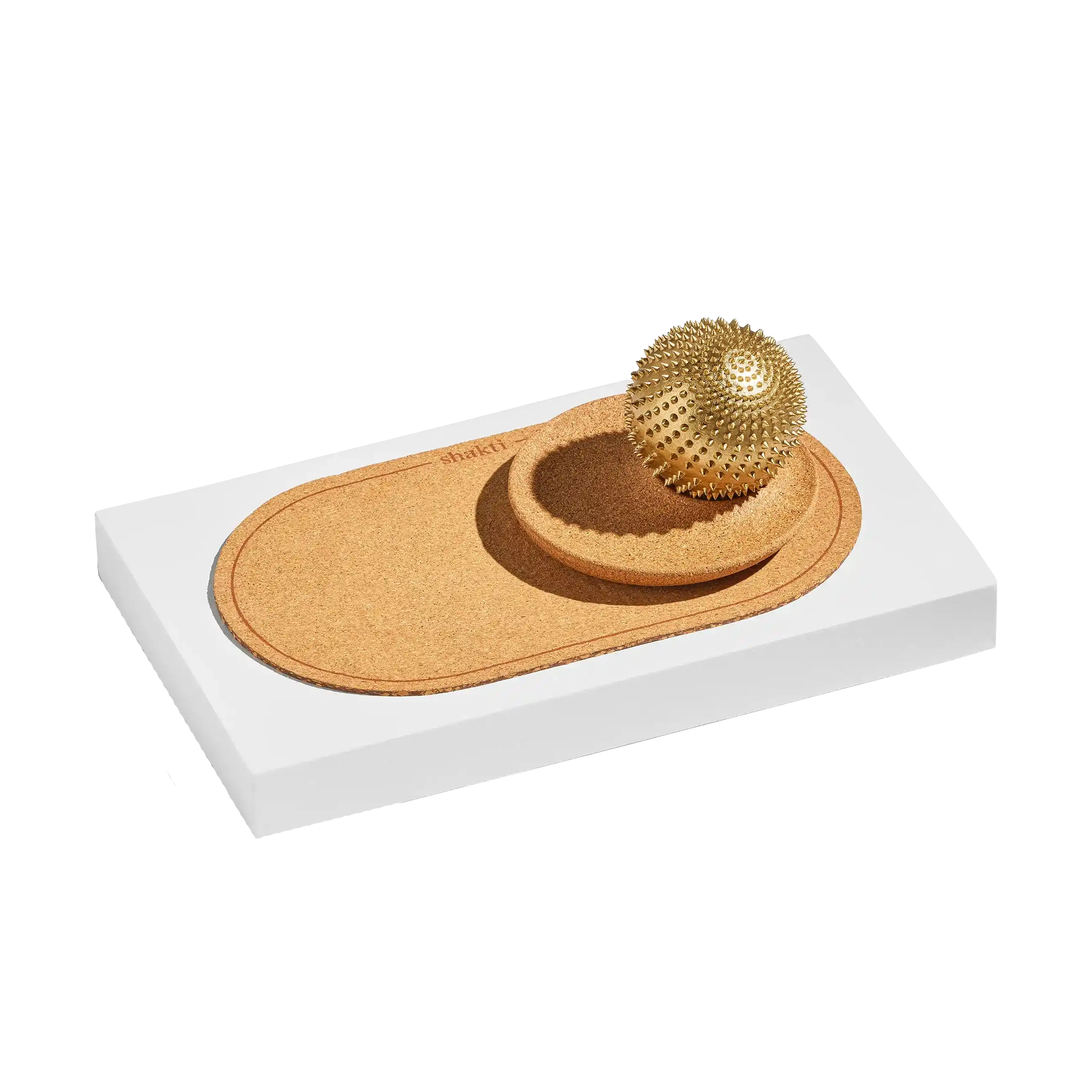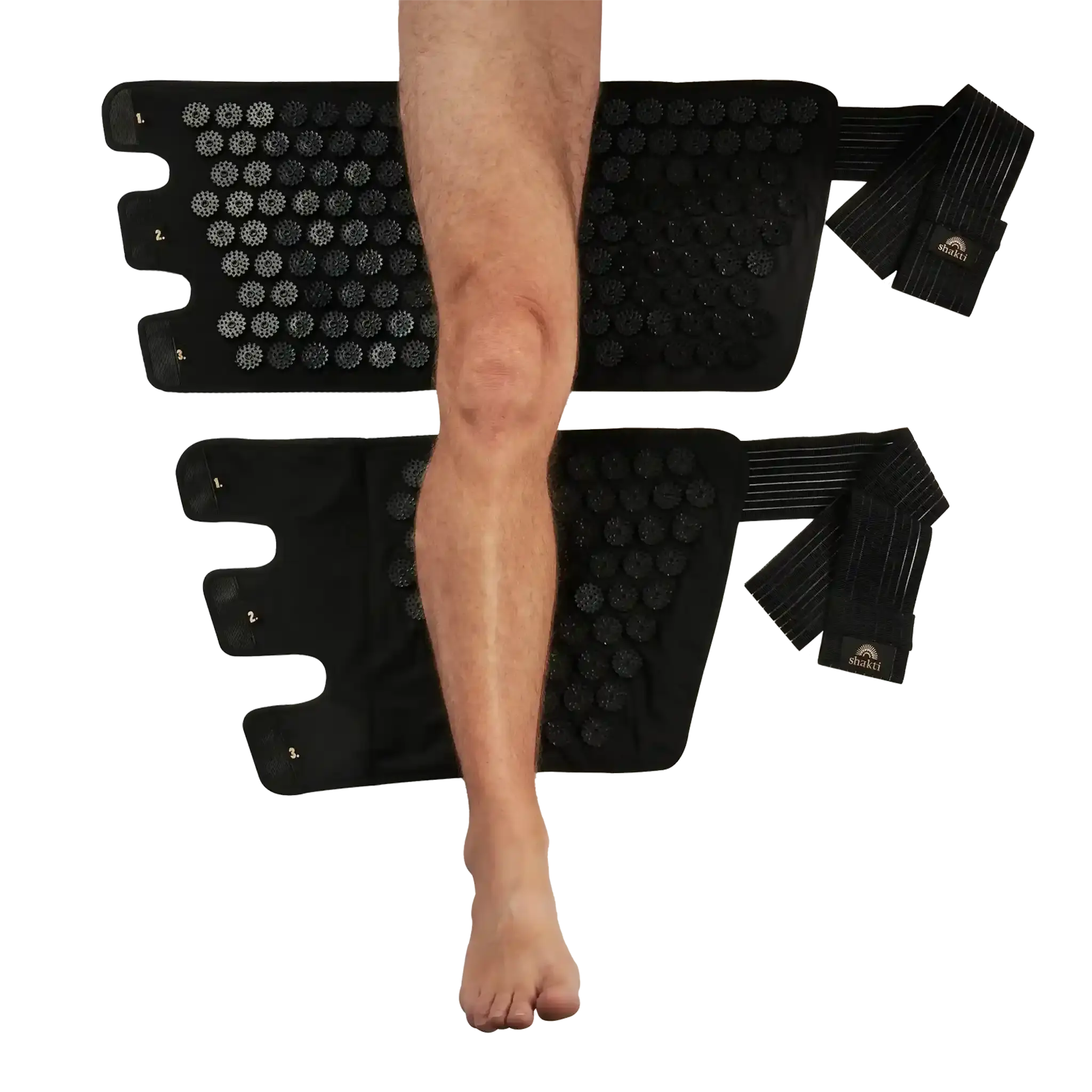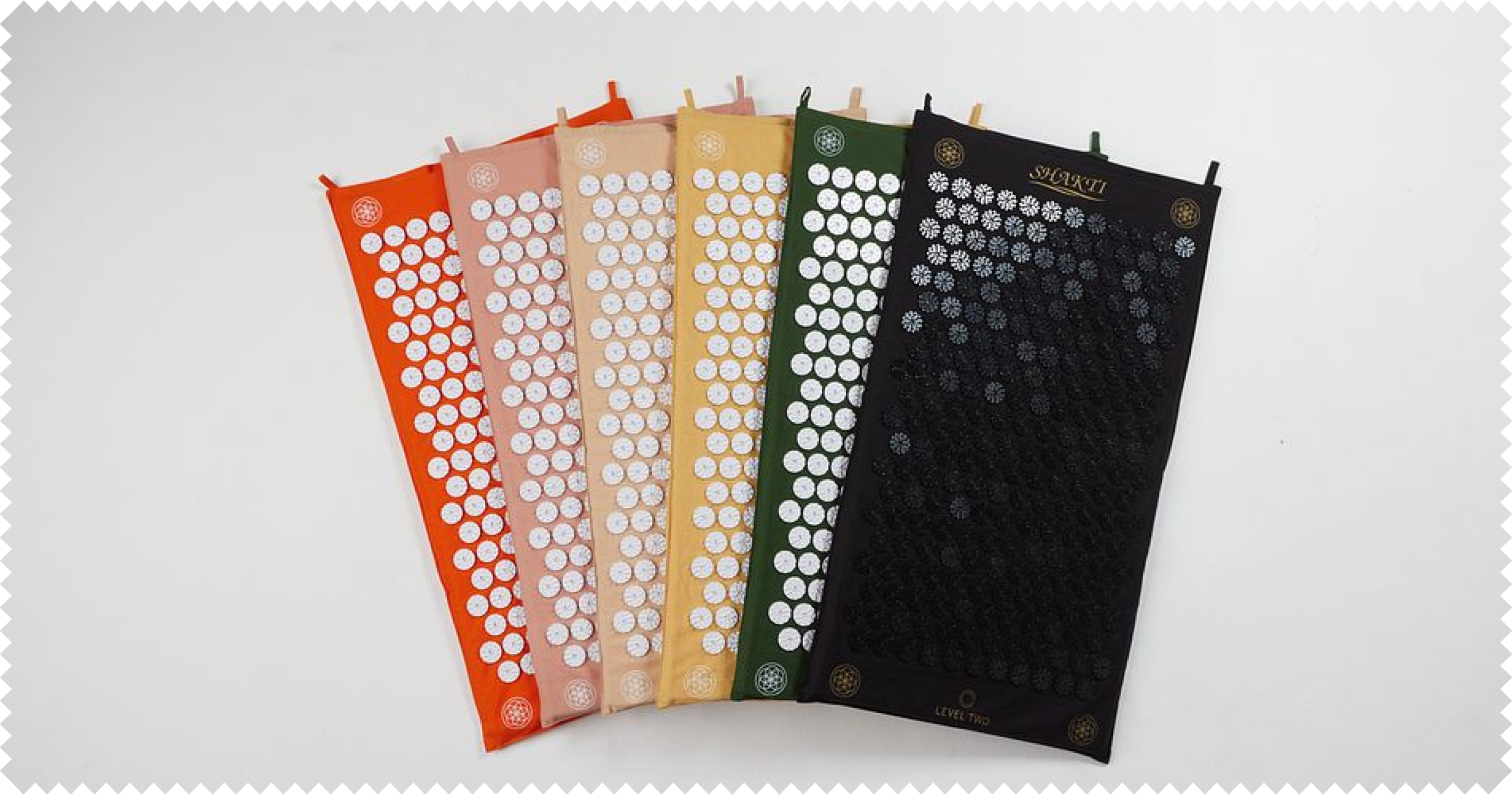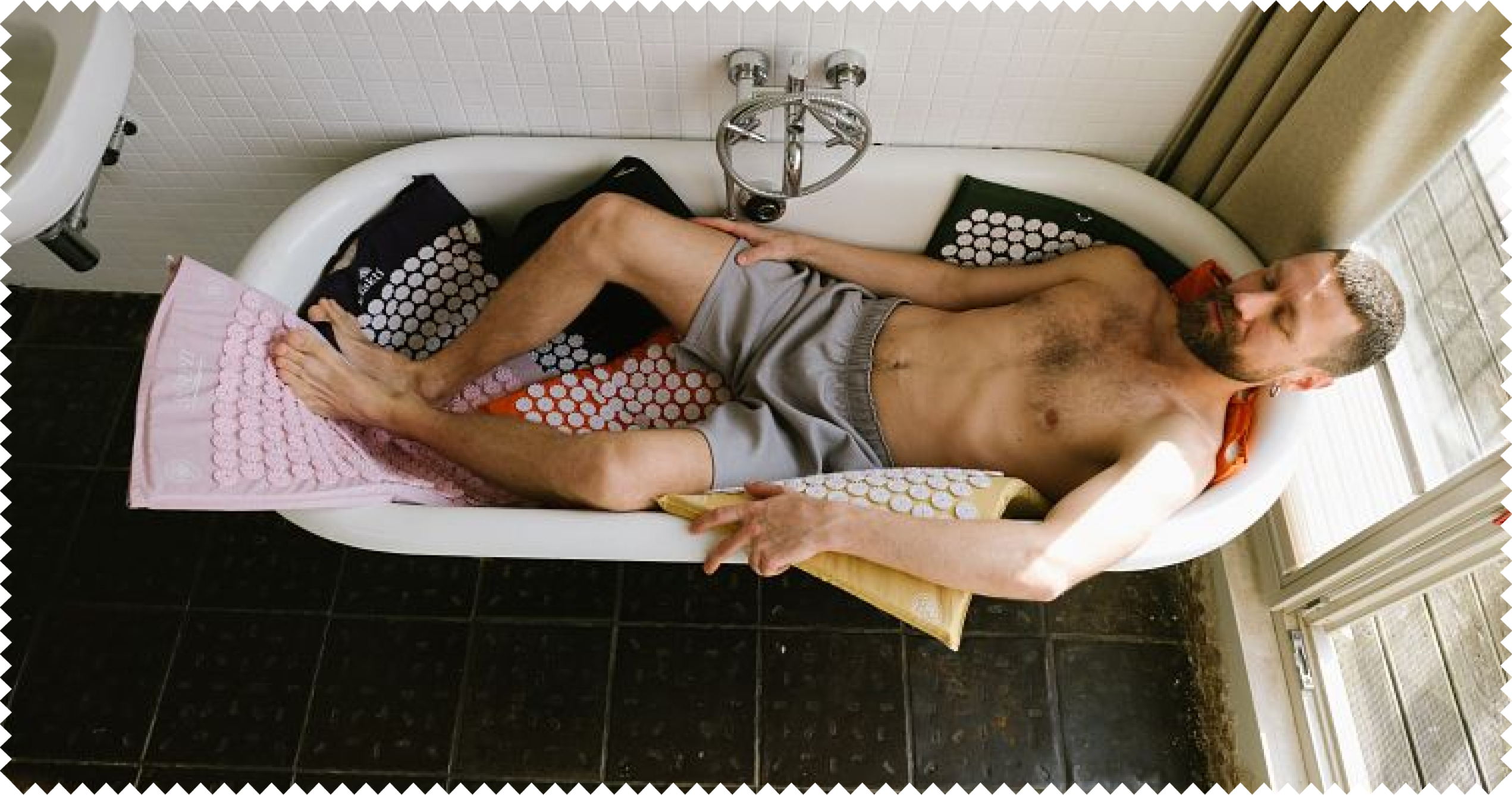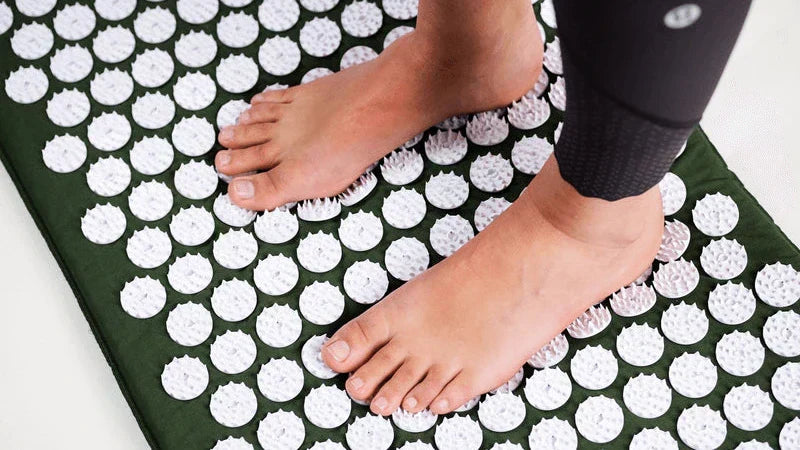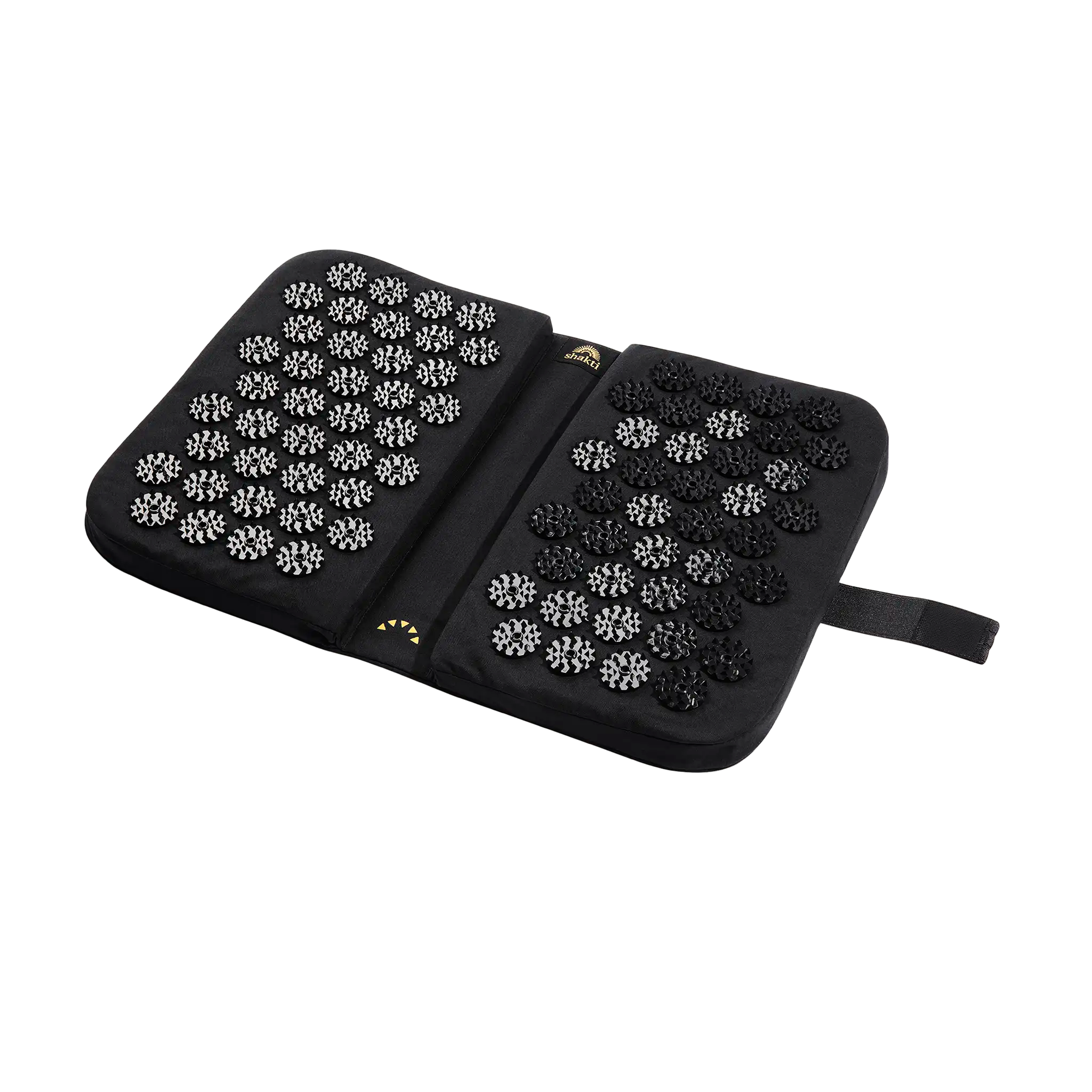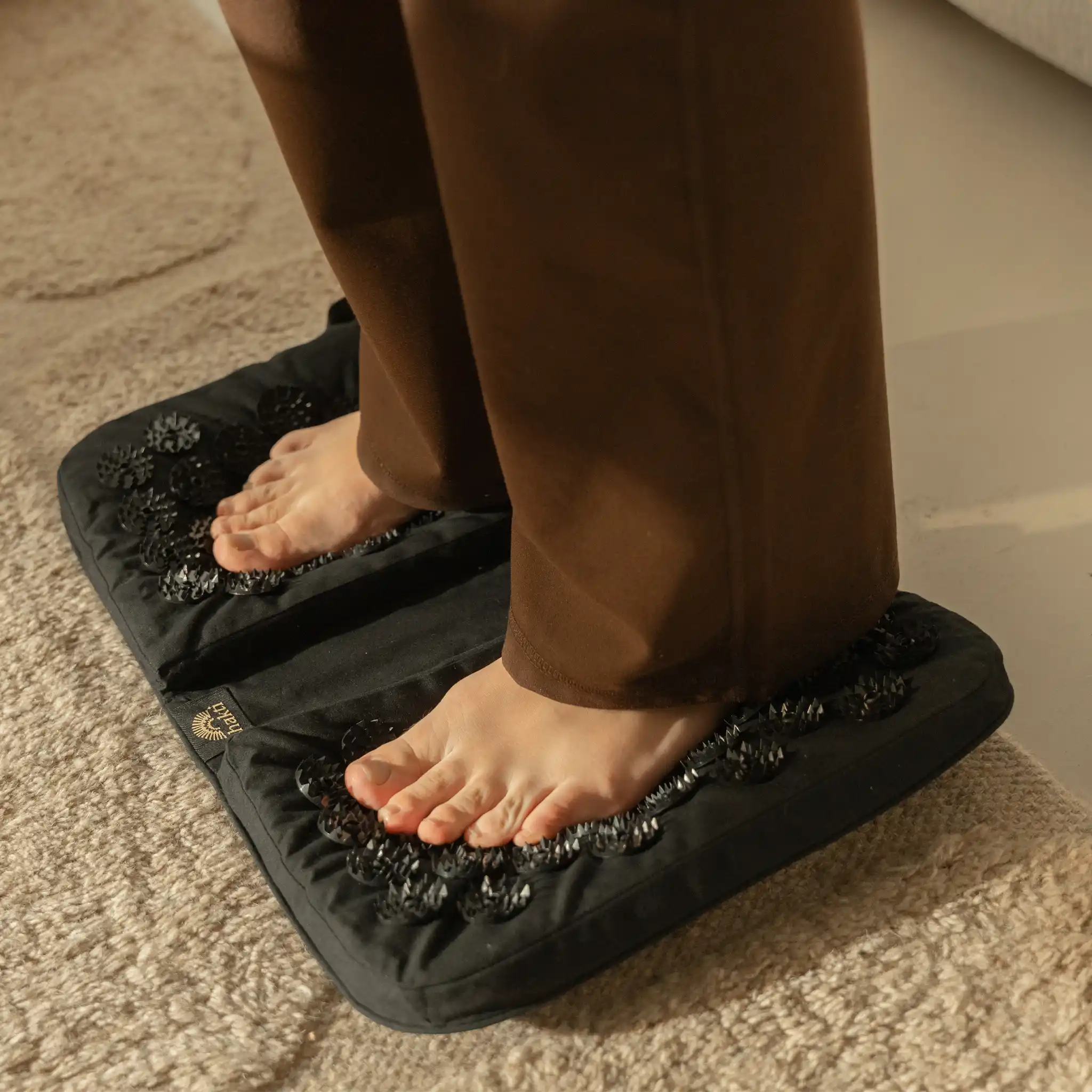- The anatomy of your foot
- How foot pain develops
- Where does foot pain occur?
- Different foot pain indicates different complaints
- Treating pain in the foot yourself: step by step to greater well-being
- Checklist: Prevent foot pain effectively
- Our conclusion on pain in the foot
Pain in the foot: How to walk on clouds again
Your feet are real high performers: day after day, they carry your entire weight over an extremely small area, move you forward and keep you balanced - whether it's on your morning walk to work or during your evening jog.
This makes it all the more stressful when foot pain restricts your freedom of movement.
We reveal the possible causes of this discomfort and how you can foot pain effectively counteract foot pain.
The anatomy of your foot
Before we take a closer look at the triggers and signs of foot pain, it's important to develop a basic understanding of the anatomy of your foot.
As a complex network of bones, tendons and receptors, the foot is divided into three areas:
The forefoot (antetarsus) with the five toes and their bones, the midfoot (metatarsus), which serves as the connection between the tarsus and the toe with its five bones, and the tarsus at the back of the foot. The latter is made up of seven bones, including the heel bone (calcaneus) and the ankle bone (talus) that rests on it. In total, your foot consists of 26 bones, 33 joints and over 100 tendons, ligaments and muscles!
You owe your ability to walk upright to countless sensory receptors located in the sole of your foot and the ligaments, which continuously send your brain information about your position. The Achilles tendon is also located between the calf muscle, clod muscle and heel bone: it is the strongest tendon in your body and buffers every step you take. It stores energy and gives you new momentum for the next step.
Pain in the foot can occur in all these different areas - and as you will see later, the exact localization provides clues as to the causes of the pain.
How foot pain develops
Foot pain is difficult to ignore as it massively disrupts your daily routine.
Even "simple" activities such as walking, standing, climbing stairs or sporting activities can become strenuous and painful.
The main possible causes of this unpleasant pain are injuries, wearing the wrong footwear, overloading, chronic illnesses, joint wear and tear or misalignments.
-
Injuries
A wrong step on a walk, an abrupt change of direction while running - and it happens: The foot twists. From sprained ligaments, ankle sprains and ankle fractures to fatigue fractures or Achilles tendon ruptures, injuries in everyday life or during sport are among the most common causes of foot pain. -
The wrong footwear
Wearing the wrong size shoes or high heels often results in acute or chronic foot pain. This can even lead to malpositions and permanent foot damage. A healthy shoe should support your foot, provide sufficient space for your toes and allow you to roll naturally when walking. -
Fatigue fracture
If you put too much strain on your foot, this can lead to a so-called fatigue fracture. The latter is not a bone fracture in the classic sense: Rather, it is a massive disruption of the bone structure. Due to the strain, the arrangement of the bony beads changes and the neighboring periosteum forms a water retention as a reaction, which can cause foot pain. -
Misalignments
Misalignments of the foot can disrupt its natural load distribution and cause foot pain and other complaints. In hallux valgus, for example, the big toe leans towards the other toes and the metatarsophalangeal joint protrudes conspicuously outwards.
A kinked foot is characterized by the arch of the foot sinking inwards to the side, while the arch of the foot is lowered or absent in flat feet. Another deformity associated with splayfoot is a widening of the forefoot, which causes the metatarsal bones to drift apart and reduces the height of the arch. -
Chronic diseases
Pain in the foot can also be a side effect of chronic diseases such as rheumatism, gout or arthrosis can also occur. In rheumatoid arthritis, for example, foot pain is caused by persistent joint inflammation that affects the inner skin of the ankle - while in the metabolic disease gout, uric acid crystals accumulate in the joints and trigger painful inflammation. -
Wear and tear
With advancing age, foot pain can usually be attributed to primary osteoarthritis in the foot and associated inflammation due to bone outgrowth. This natural wear and tear of the joints, particularly at the high stress points of the foot, affects around 50 percent of all women and a third of men over the age of 60. In the over 70s, this proportion even rises to around 80 percent for both sexes.
Note: If your foot pain lasts longer than three days, if you can hardly bear weight, or if you have pain in your foot and it is swollen? Then you should definitely see a foot specialist.
Where does foot pain occur?
Not all foot pain is the same - and the exact location can often provide the first clues as to the cause of your discomfort. Whether the front, middle or back of the foot is affected: By categorizing your foot pain according to its location, you make it easier to symptom explanation and lay the foundation for effective treatment.
Pain in the front foot
In the forefoot with the toes, hallux valgus and hallux rigidus are among the most common causes of foot pain. As already mentioned, hallux valgus is a deformity in which the big toe deviates towards the other toes and a prominent bulge forms on the ball of the foot. Hallux rigidus, on the other hand, is a form of osteoarthritis in the metatarsophalangeal joint of the big toe and leads to restricted movement in combination with foot pain. Hammer toe and claw toe can also lead to discomfort in the front of the foot - because with these deformities, the toes do not lie flat on the ground, but in an angled position.
Pain in the middle foot
If your middle foot hurts, the cause may be a flat foot or fallen arches, for example: While the arch of the foot is flattened in flat feet, the heel tilts inwards in flat feet and can result in pain.
Overloading, incorrect footwear or altered foot mechanics can also be responsible for the discomfort.
Pain in the lower foot and heel
Various problems can occur in the lower part of the foot and especially in the heel. Inflammation of the Achilles tendon can be very painful, especially under stress.
However, heel spurs, a bony outgrowth on the underside of the heel bone caused by repeated tensile strain, can also cause intense discomfort. Typical of heel spurs is the so-called "first step pain", which causes pain in the foot, especially in the morning.
Plantar pain
Pain in the sole of the foot is often caused by inflammation of the plantar tendon or a heel spur. In both conditions, the tendon on the heel bone can be affected, which leads to pain when walking and standing. This can be particularly troublesome and lead to enormous restrictions in everyday life.
Pain on the inside of the foot
Incorrect movements and overloading that occur repeatedly and intensively can contribute to pain on the inside of your foot. Possible triggers include differences in leg length or various foot malpositions. Problems such as inflammation of the tibialis posterior tendon, a fatigue fracture or tarsal tunnel syndrome can also cause pain on the inside of the foot.
Pain on the outside of the foot
Pain on the outer foot can often be attributed to a tailor's bunion, a special deformity of the little toe. This bunion develops when the little toe curves inwards due to external pressure or genetic predisposition. The resulting prominent bulge on the outside of the foot is particularly susceptible to friction and painful pressure points. In addition, the constant friction and pressure can lead to bursitis. bursitis over the affected joint.
Different foot pain indicates different complaints
Your pain in the knee extends into your foot, a twinge pierces the sole of your foot, or the discomfort occurs at rest? Pain in the foot can manifest itself in different ways. That's why we've compiled some common manifestations of foot pain for you, as well as their possible interpretations.
Pain in the foot when stepping and rolling
Pain in the foot when rolling or walking usually indicates problems in the midfoot or the sole of the foot, such as a flat foot or splayfoot. In some situations, injuries or instabilities in the ankle joint can also play a role. With Morton's neuroma, you usually feel a pressing pain, as if you are constantly stepping on a small pea in your shoe.
Sharp pain in the foot
If stabbing foot pain occurs suddenly without any previous injury, you can often interpret this as an alarm signal for overloading - for example through sport.
A particularly penetrating stabbing pain in the rear sole area can also indicate a heel spur with an inflamed plantar tendon (plantar fasciitis) and force you to walk with an involuntary limp.
Pain in the foot when walking
Signs of wear and tear on the bone structure of your foot are one of the most common causes of pain in the foot that torment you when walking. The pulling or stabbing pain mainly occurs when you start walking. In addition, previously described causes such as malalignment, hallux valgus, fatigue fractures or tarsal tunnel syndrome may be behind your symptoms. Localization of the pain is essential for a more precise diagnosis.
Pain in the foot when walking and jogging
Pain in the foot after jogging is usually caused by overloading the muscles and tendons. The tibial nerve can also be irritated by muscles that swell as a result of jogging. If this is the case, you should refrain from jogging for the time being and ideally consult a doctor. They can advise you on how to proceed.
Pain like electric shocks in the foot
Do you feel electric shock-like pain that travels from your midfoot to your toes? This could indicate a Morton's neuroma - a nerve irritation in the midfoot, primarily between the third and fourth toes near the metatarsal head. Often, too-tight shoes or intense running training are triggers for this condition. Here, too, it is called: Off to the doctor! And perhaps to the shoe store.
Foot pain at rest
People with rheumatism, rheumatoid arthritis or gout often complain of so-called resting foot pain. Damage to the foot nerves, for example due to tarsal tunnel syndrome, can lead to pain in combination with tingling and numbness in the foot. In addition, start-up pain after a break often occurs in connection with joint wear and tear.
Treating pain in the foot yourself: step by step to greater well-being
You are now familiar with the most common foot complaints. But how exactly can you combat the pain yourself? There are many gentle ways to pamper your feet and get them back into shape. But please remember to always consult a podiatrist first if you are unsure! If you are dealing with minor complaints, the health of your feet can be promoted with targeted exercises, acupressure and so on.
Exercises against foot pain
Ready for a bit of exercise? With the following three exercises, you can strengthen your feet and gently relieve discomfort.
For the first exercise, grab a tennis ball, place it on the floor and gently roll your whole foot back and forth. This stimulates blood circulation and restores elasticity to the foot.
In the second exercise, focus on your toes. For the toe bend, cross one leg over the other, grab your toes with your whole hand and gently pull them into the bend. After two minutes of stretching, it's time for the counter-movement in the form of the third exercise, the toe stretch: here you push your toes in the opposite direction. Again, stay here for two minutes before switching sides.
Additional tip: If you would like to find out about other exercises for specific complaints, we recommend our article "Exercises for heel spurs, plantar fasciitis and foot pain."
Acupressure and massage: pure wellness for your feet
Feet often do their job unnoticed - at least until they find their way back into your memory through unpleasant foot pain.
It doesn't matter whether you are constantly on your feet at work or suffer from aching feet due to other overuse: Acupressure and massage have proven to be effective methods of pampering troubled feet for many centuries.
Especially with the Shakti Acupressure Footmat you can stimulate your feet and promote the flow of energy in your body. This unique acupressure mat specifically activates the acupressure zones of your feet and gives them and your entire body deep relaxation and new energy.
Simply stand on the mat for 5 to 15 minutes and enjoy the invigorating effect. Depending on your preference and intensity, you can use the mat sitting or standing, with or without socks and vary the pressure on specific points by shifting your weight: The Kidney 1 (KI-1) acupressure point, for example, is located on the sole of the foot, in the middle of the front third of the foot. It is known to help relieve pain and discomfort in the feet. The Leber 3 (LV-3) point, which is located between your first and second toe, can also counteract foot pain, for example due to hallux valgus, through stimulation.
For pain in the arch of the foot, treatment of the Jiexi point (stomach 41) at the transition from the back of the foot to the foot is recommended.
More about acupressure
Good to know: Acupressure can be perfectly combined with a foot reflexology massage.
This type of massage is based on the idea that each zone of the foot corresponds to certain organs and areas of the body. Targeted pressure on these specific areas can not only relieve pain in the foot, but also improve general well-being. To do this, sit comfortably, preferably on a chair or on the bed. Place one foot on the opposite knee so that you can easily reach all areas of your foot. If necessary, use a massage oil or lotion to increase lubrication.
Start by gripping your entire foot firmly but gently with both hands. Press lightly and move your hands from the toes to the heel and back again. Take a toe between your thumb and index finger and apply gentle pressure. Gently pull the toe up and down and turn it gently back and forth. Repeat this for each toe. Now use your thumb to massage the sole of the foot in small circular movements. Start at the ball of the foot and work your way to the heel. It is particularly beneficial if you hit painful or tense areas and massage them gently, but with a little more pressure. To round off the massage, stroke gently but firmly from the ankle over the back of the foot to the toes and then over the sole back to the heel. This promotes blood circulation and leaves you feeling relaxed. Repeat the process on the other foot.
Checklist: Prevent foot pain effectively
□ The right footwear
Choose shoes that fit well and offer your foot support and space. Avoid shoes that are too tight or have high heels for long periods of time.
□ Foot hygiene
Wash your feet regularly and dry them thoroughly, especially between the toes. This will help prevent athlete's foot and other infections.
□ Foot gymnastics and massages
Incorporate regular foot exercises into your daily routine to strengthen the muscles. Use an acupressure mata tennis ball or your hands for self-massage.
□ Keeping an eye on weight
A healthy body weight takes the strain off your feet and reduces the risk of foot complaints.
□ Regular breaks during exercise
If you have to stand or walk for a long time, take regular breaks and sit down. If possible, alternate between sitting, standing and walking.
□ Caution during sport and training
Stretch before and after exercise to avoid injury. Always listen to your body and don't overdo it with the strain.
□ Foot care
Use moisturizers on dry skin and watch for signs of cracking or infection. Cut your toenails regularly and straight across to avoid ingrown nails.
□ Walk barefoot
Simply leave your shoes behind and walk barefoot. This natural experience not only strengthens your foot muscles, but also promotes the healthy rolling of your foot. Although walking barefoot on hard surfaces is certainly a challenge, it is an excellent way for pain-free feet to increase their fitness. On soft ground, walking barefoot becomes a true wellness experience, even with certain foot malpositions.
Our conclusion on pain in the foot
As the unrecognized heroes of everyday life, feet react sensitively to incorrect footwear, excessive strain or misalignment. Foot pain and other complaints can be the result - and can really restrict your freedom of movement.
By carefully observing the pain in your feet, you can classify it accordingly, consult a specialist if necessary or give your feet the attention they deserve with self-treatment techniques such as acupressure.
We wish you a feather-light gait on happy feet at all times!


